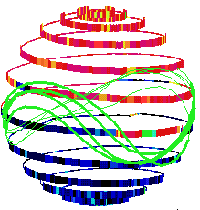This image shows the Sun's
polarity measured by Ulysses
Imperial College
VHM/FGM Instrument Page
Ulysses has
a unique orbit. By going past
Jupiter, Ulysses was able to go into an inclined orbit that has never been achieved before (this is
the sling shot approach to getting a spacecraft into orbit). From this new type of orbit, Ulysses can track parts of
the Sun's magnetic field that have never been tracked.
The magnetometer was included on the Ulysses spacecraft to track the Sun's magnetic field. It uses two different sensors to tell how strong the magnetic field is at different times and at different places around the Sun. The two sensors are called the Vector Helium Magnetometer and the Fluxgate Magnetometer (try saying that 3 times in a row!).
Since being turned on in October 1990, the magnetometers have produced a steady stream of observations. Several disturbances in the magnetic field have been tracked. Scientists look forward to even more findings as Ulysses is in its second pass of the Sun. It is during this second pass that solar activity related to the magnetic field will be at its peak.
You might also be interested in:
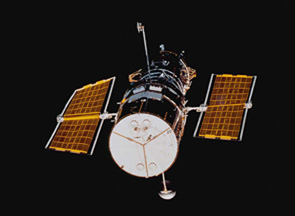
The Hubble Space Telescope (HST) was one of the most important exploration tools of the past two decades, and will continue to serve as a great resource well into the new millennium. The HST found numerous
...more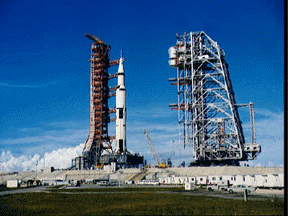
Driven by a recent surge in space research, the Apollo program hoped to add to the accomplishments of the Lunar Orbiter and Surveyor missions of the late 1960's. Apollo 11 was the name of the first mission
...more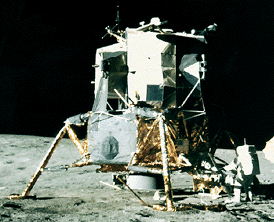
Apollo 12 was launched on Nov. 14, 1969, surviving a lightning strike which temporarily shut down many systems, and arrived at the Moon three days later. Astronauts Charles Conrad and Alan Bean descended
...more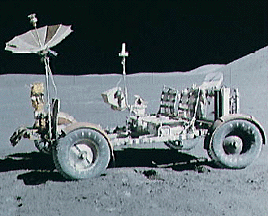
Apollo 15 marked the start of a new series of missions from the Apollo space program, each capable of exploring more lunar terrain than ever before. Launched on July 26, 1971, Apollo 15 reached the Moon
...more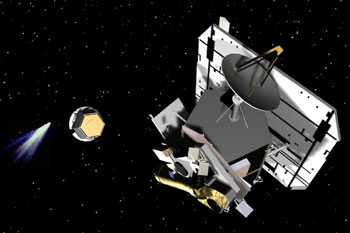
NASA chose Deep Impact to be part of a special series called the Discovery Program on July 7, 1999. The Discovery program specializes in low-cost, scientific projects. In May 2001, Deep Impact was given
...more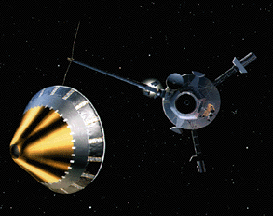
The Galileo spacecraft was launched on October 19, 1989. Galileo had two parts: an orbiter and a descent probe that parachuted into Jupiter's atmosphere. Galileo's main mission was to explore Jupiter and
...more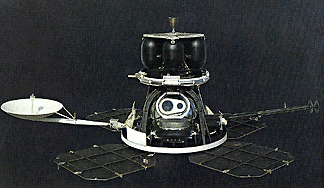
During 1966 through 1967, five Lunar Orbiter spacecrafts were launched, with the purpose of mapping the Moon's surface in preparation for the Apollo and Surveyor landings. All five missions were successful.
...more
